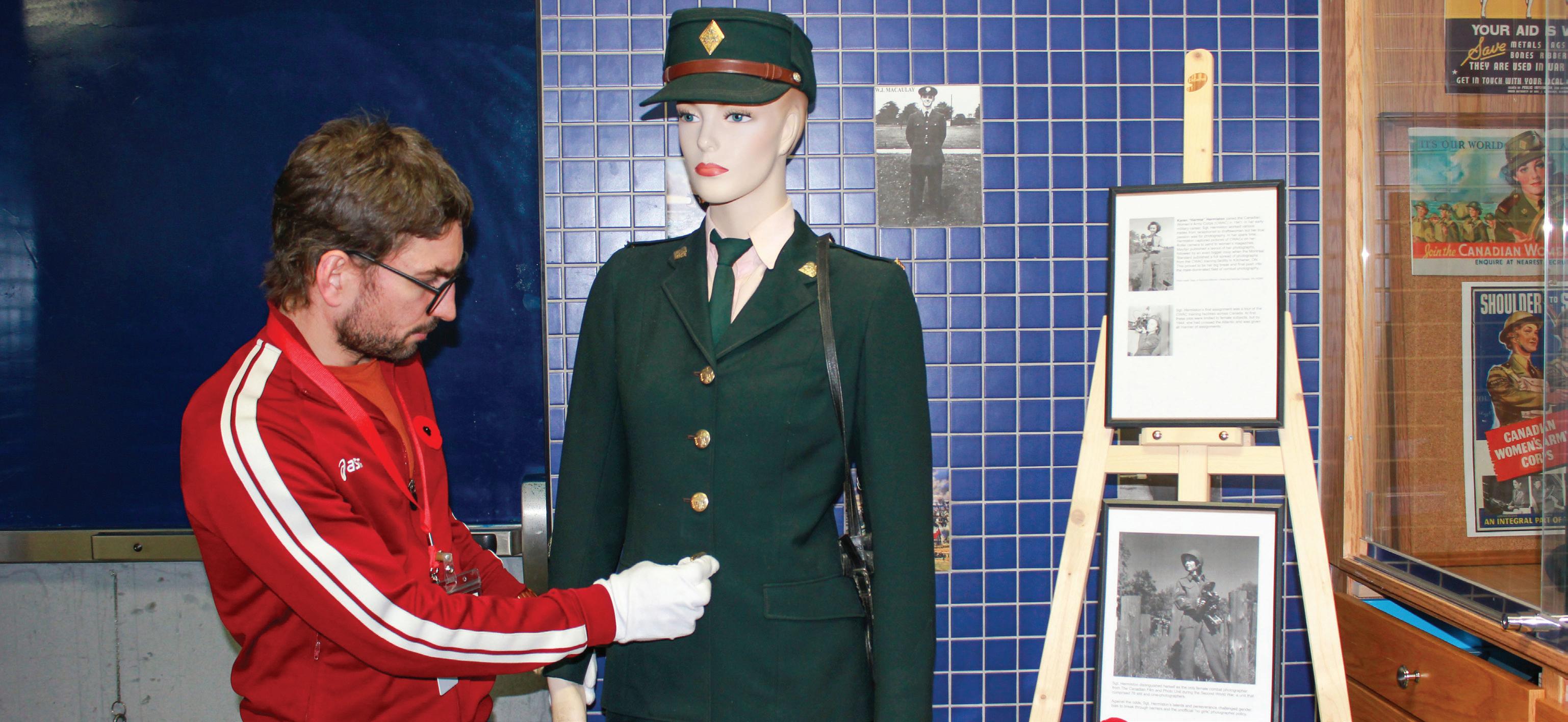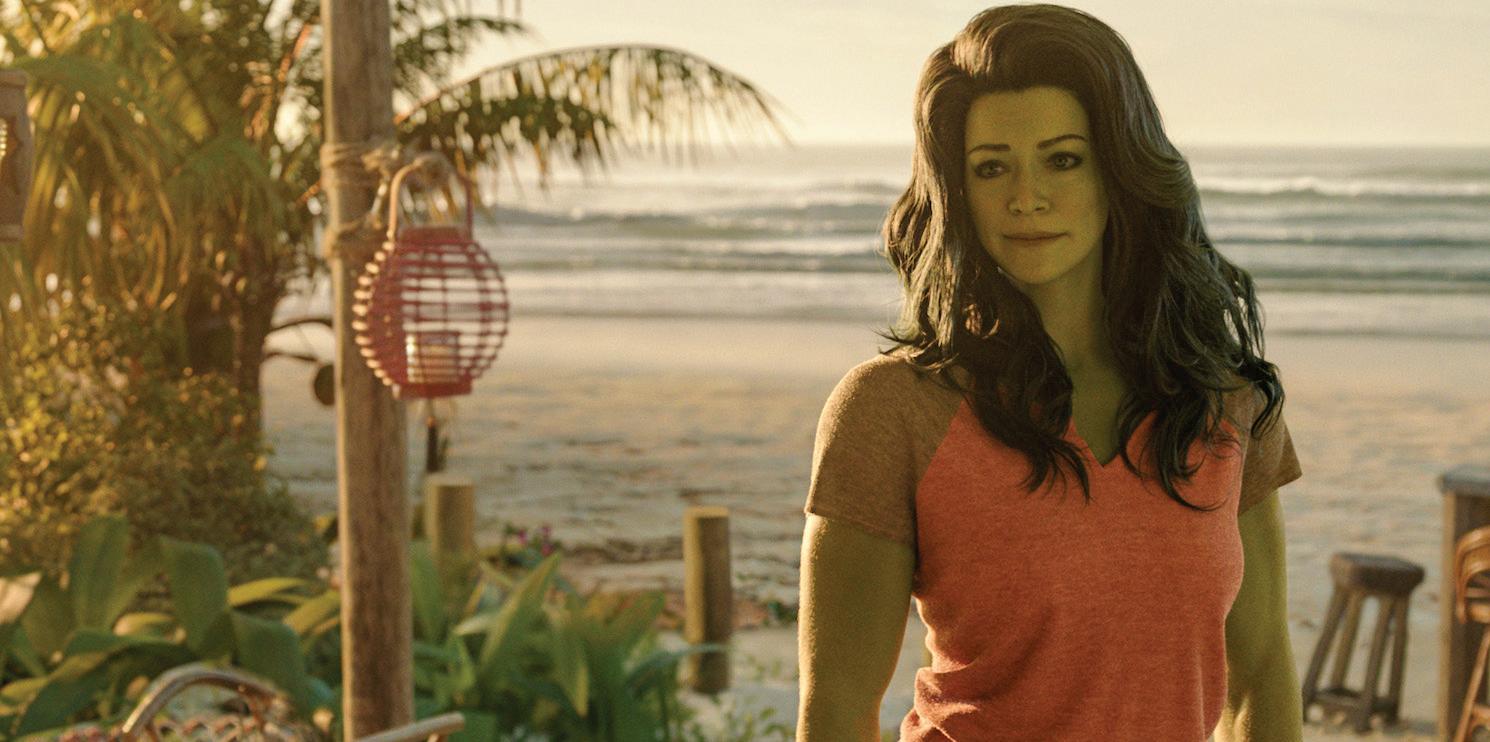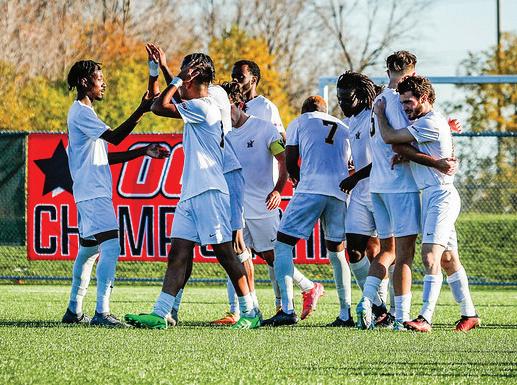






Thousands of union members gathered in front of Queen’s Park on Friday morning after a new bill made it illegal for the Canadian Union of Public Employees (CUPE) to strike.

CUPE President Fred Hahn took to the stage as the sun beamed over the building behind him and ramped up the energy of the crowd.
A sea of education workers holding signs and flags huddled around him.
“They wanted us to feel afraid, but today we’re showing them we have no fear,” Hahn said as protesters cheered in solidarity outside Queen’s Park. The picketing education workers average about $40,000 a year.
“The salaries that they want to offer us is a joke,” an Edu cational Assistant said as she was decorated with signs sup porting the cause.
“Our work is not recognized according to what they want to pay us,” she said.
Protesters, including the Education Assistant who spoke to Humber’s Et Cetera, were advised not to give their names in interviews because of fines
that would be imposed from Bill 28 – an unprecedented piece of legislation put through by the Ontario government on Thursday afternoon that revoked the union’s right to strike.
The provincial government invoked the notwithstanding clause of the Charter, which allows governments to pass leg islation even if it is unconstitu tional.
“To include this notwith standing clause, that’s just set ting off a nuclear bomb in the middle of negotiations and then wondering why you can’t come to an agreement,” NDP MPP Chandra Pasma said.
“To do it before workers have even gone on strike while workers are still at the table is already not acting in good faith,” she said.
They had been in negotia tions with the Ontario govern ment fighting for an annual salary increase of 11.7 per cent, which is about $4,600 more per year from their average salary.
The increase would also reverse the cuts that have taken off their wages over the last 10 years.
In an October press release, CUPE said there has been a total of $1.6 billion in cuts from
public education in the last year alone.
Workers said they needed more staff, particularly educa tional assistants, early child hood educators in kindergarten classrooms, more librarians, custodians and secretaries.
“There’s got to be a change because there’s nothing but cuts happening,” the Educational Assistant said.
“We need to be recognized. With everything going on, we’ve got our own families at home and it’s hard to survive on our pay,” she said.
On Sunday, CUPE rejected the final offer from Ford’s gov ernment that included a 2.5 per cent annual increase in salaries for those earning under $43,000 and 1.5 per cent for all others.
“We feel strongly that we must do everything available to the government to give a voice to children,” Minister of Edu cation Stephen Lecce said in a press conference.
The Ontario government said that its priority is to keep children in school. They high lighted the impact that the pan demic took on the kids’ educa tion over the past two years.
Pasma said that rather than the government being focused on passing Bill 28, they should
have instead been at the negotiating table.
“Refusing to come to the table guarantees there will be a strike,” she said.
“Our government has said that it promises kids a stable normal school year, and instead they’ve essentially guaranteed that our kids’ school year is going to be disrupted,” Pasma said.
Prime Minister Justin Trudeau criticized the prov ince’s use of Bill 28, saying that it’s a “loophole that a majority uses to override fundamental rights of minorities.”
Another Education Assis tant walking in the picket line around the Ontario Legislative Building said they are willing to picket for “as long as it takes,” to find an agreement between workers and the government.
Schools were forced to close today because of the walkout and many are preparing for remote-learning in the event the strikes continue next week.
“The fact that schools are closing because these workers are going on strike just shows how essential these workers are to keeping our schools func tioning, to keeping them safe, to providing the support kids need,” Pasma said.
Humber Et Cetera is the Humber College journalism program laboratory newspaper. It is created by second and third year journalism students. Et Cetera serves to inform the Humber community and give its readers well rounded coverage on the things that matter to them.
Brampton on the map,” Brar said.
BRAMPTON, Ont. — Shubh deep Singh Sidhu, 28, a former Humber student and a world-fa mous rapper, was driving in Mansa in the northern Indian state of Punjab when he was shot dead on May 29, 2022.
Indian police focused their investigation on a Canadi an-based gangster who claimed responsibility for the killing of the India-based Punjabi-lan guage singer and rapper who is known by his stage name Sidhu Moosewala.

Remedie Brar, a singer who worked with Moosewala, said he always supported students and anyone that was in need. More importantly, Brar said Moosewala was responsible for making Brampton a more widely recognized name in the GTA and across Canada.
“He was the one who put
Brar took a deep breath and remained silent for a few sec onds as she remembered the time when Moosewala used to live in Brampton. She said Moosewala was a rare kind of person, someone who could make just about anyone feel like they’re important.
“Every time you would talk to him, he would always make you feel special,” Brar said.
The Oct. 19 tree-planting ceremony was organized by Moosewala’s parents to honour and memorialize their son. Among those who attended was Brampton mayor Patrick Brown.

Moosewala came to Canada in 2016 as an international student and attended Humber College in the same year. He started his musical journey while living in Brampton.
The artist grew in popularity and throughout his time as a budding artist, Moosewala
amassed almost nine million Instagram followers and 11 million YouTube subscribers.
Moosewala’s close friend Deepi Cheema pointed towards the direction of Sheridan Col lege, just a few streets away from the tree planting site. Cheema recounted the first time he saw Moosewala on stage and the electrifying feeling he felt seeing him.
“There is not a single moment spent with Moosewala that I can forget,” said Cheema.
Moosewala was the first-ever Punjabi singer to make it to the Billboard Global Charts. He released a song titled “B-Town” in honor of Brampton.
Moosewala wasn’t just a musi cian, he also tried his hand at film. In Moosewala’s movie Yes I am a Student, he played a past version of himself depicting the struggles of an international stu dent in Canada.
Moosewala comes from the
agrarian district of Mansa, a rural area in Punjab, north of the capital New Delhi and near the Pakistan border. Soon after coming to Canada, he became an established singer here too.
Bhupinder Sidhu, Moosewa la’s family friend, said during a speech at the tree planting that
the singer was a legend who not only uplifted the Punjabi music industry through his songs but also raised awareness about the issues faced by common people.
“He tried to make the world a better place to live, unfortu nately, God had other plans,” Sidhu said.
Thousands of Brazilian expa triates gathered at the Beanfield Centre at Exhibition Place last Sunday, voting in the presidential election that proclaimed Lula da Silva as Brazil’s new president.


The watershed election was a battle between conservative Jair Bolsonaro and populist Lula. In the first round of voting, Lula finished with 48.4 per cent pop ular support of about 57.2 mil lion votes, ahead of Bolsonaro at 43.2 per cent with 51 million votes. There were nine other presidential candidates.
However, the second round seemed challenging for those who wanted a change of scenery.
Carol Cavalcanti woke up early to vote. For her, having Bolsonaro for another four years was not the best option.
“Bolsonaro’s permanence means a definitive change in Brazilian society, perhaps even an irreversible one,” she said. “During his govern ment, Bolsonarism has already increased, with people feeling free to commit racial, sexist and homophobic crimes. Four more years of that would be a tragedy.”
Defeated at the polls, Bol sonaro now loses any privileges related to his position, and can be investigated without any protection guaranteed by it.
Currently, there are four investigations authorized by the Brazilian Supreme Court (STF) in which the former president is investigated on suspicion of different crimes, including money laundering and inter ference with the Federal Police.
Bolsonaro also faces accusa tions of spreading faking news
related to COVID-19 vaccines during the pandemic.
Samuel Costa, a 45-year-old machine operator, says he feels the change in leadership is essen tial for Brazil’s external image.
“This election represents everything. We can no longer embarrass ourselves here in Canada explaining the daily regressions that take place in Brazil,” he said.
“We need someone to repre sent us better.”
Lula was the first president in Brazil’s history to be elected three times. He was formerly convicted of passive corrup tion and money laundering, and resumed the presidential race after having all convictions overturned in 2021, for irregu
larities in the process.
Videos of the Federal Highway Police (PRF) stopping buses carrying voters — espe cially in the Northeast, a region where Lula won in every state in the first round — circulated on social media.
Many people asked for the extension of voting hours for these regions on social media, so that everyone could exercise the right and obligation to vote, but the request wasn’t granted.
Lula repeated throughout his campaign that he intends to unite the country, including bolsonarists, using the slogan “gathering the divergent to defeat the antagonists.” The challenge is to see how those who supported Bolsonaro until
the end will react now.
Bolsonaro supporters say people ought to be concerned about the future of the country.
Ingrid Guimarães was dis appointed with the announce ment of a new president.“I’m ashamed to have a former con vict as a president,” she said. “Brazil deserved better.”
Lucas Lima expressed con cern to Humber’s Et Cetera.
“I can’t believe Lula was even allowed to run against Bolsonaro. I hope my country doesn’t fall back into the chaos it was before,” he said.
The so-called Bolsonarism gained popularity during the years of Bolsonaro’s govern ment. It can simply be under stood as the unconditional sup
port for Jair Bolsonaro.
Bolsonarists would be, according to the Datafolha research institute, voters and politicians who consider the former government good or great, who do not give up voting for Bolsonaro and who say they “always believe” in his statements.
Almost 15 per cent, or about 23 million, of the Brazilian elec torate would form this group.
“Bolsonaro’s supporters even appropriated the Brazilian flag. Our biggest challenge will be to beat bolsonarism,” said Lenicio Siqueira, a journalist and cancer researcher.
“Now we will have to work hard to rebuild our image and who we are as a society,” he said.
Civil unrest continues around the world — including Iran — after the death of Mahsa Amini at the hands of morality police. And the indignation of the Iranian people is being shared through one of the most powerful tools to convey emotion: art.

Amini, 22, died on Sept. 16. She had been in a coma for three days, after being arrested in Tehran by the morality police for allegedly breaking the strict female dress code of the Islamic Republic, which requires cov ering the hair with a hijab.
After being arrested, Amini was taken to a police station to attend an hour of re-edu cation for misusing the hijab. Hours later, she was admitted to the capital’s Kasra Hospital in a coma after suffering a heart
attack.
The father of the victim, Amyad Amini, assures the authorities refused to give him the autopsy of his daughter and denied that Mahsa Amini suf fered any heart problems.
Since then, protests have spread around the world under the cry: Women, Life, Freedom.
Illustrators, digital artists, photographers, musicians and artists of various styles have joined this movement to give a voice to the women of Iran and to expose the injustices that Iranians experience under the Islamic Republic. The most represented symbols in this movement are scissors, burning hijabs, loose hair and Mahsa Amini’s face.
Hajar Moradi, an Irani an-Canadian multidisciplinary artist and filmmaker based in Toronto, made a digital art

piece that is being used both in Canada and Iran as a banner for protests.
She said her goal was to convey that the women of Iran are fed up and angry. She wanted to encourage more women to join the action.
“As a human, I feel obligated to raise my voice in the face of injustice,” Moradi said.
“I am an artist and my weapon is my art, so I try to use this powerful medium that I have to amplify the Iranian people’s fight against the dicta torship.”
Activists in Iran argue that since the start of the protests in the country around 300 people have been killed, including two teens who were brutally mur dered by the police.
Sarina Esmailzadeh,16, and Nima Shakarami, 17, both died after the police beat them
repeatedly with batons while they protested.
Toronto-based artist, Jowelle Bou-Younes, created “Angel of Revolt”, a painting that is being shared across social media plat forms and was inspired by mul tiple protests.
“I am not Iranian, I’m not Muslim. I am a Lebanese-Ca nadian woman who grew up in a Christian household,” BouYounes said. “But I’m a woman and I’m a human, and other humans are being silenced.
“And for some reason, their story can be heard through me,” she said. “I don’t know how it happened. I just made a painting.”
Just like Moradi and BouYounes, other Canadian art ists like Vancouver’s Victoria Boulet are using their social media platforms to share their work, and inform and invite
people to attend the protests.
“Capturing Mahsa in art helps cement her in history, hopefully reinforcing the idea that individuals should not be prosecuted and murdered for expressions of individual choice,” said Boulet, who cre ated a painting called Mahsa Amini.
Just like these three artists, many others are forming part of the Women, Life, Freedom movement that grows every time an image is shared on social media or the hashtag #mahsamani is mentioned, fuelling hope for change.
“Art can speak so much louder than anything on this planet, it speaks every lan guage,” Bou-Younes said. “Why try to limit your audience with words when you can talk directly to their minds through a painting.”

The Royal Canadian Legion Branch 286 in Etobicoke is hosting a brand new museum that focuses on the lesser known contributors to Canada’s war effort.
Opening on Nov. 11 at the Irwin Avenue building in the Albion Road-Elmhurst Drive area, the small museum will display more than 700 artifacts from as early as the War of 1812 to deployments in Afghanistan. It will feature several unique displays that include dog tags from the first female doctor in the Canadian Army.
The museum is the passion project of its curator and man ager, Francesco Bori.
“The mission is to make sure that everyone who contributed to any of the conflicts gets the exposure and the acknowledg ment and the respect that they need,” Bori said.
“We see some of these contri butions missing in museums,” he said. “That is where I think our niche is. And luckily we found several stories and sub jects that we can actually tackle that way.”
Bori highlighted the signif
He said the importance of war photographers cannot be overstated as the images they captured define how history is shared today.
The museum also features a wall dedicated to Indigenous, Black and LGBTQ+ veterans.
A special diorama hand crafted by volunteers will also be shown at the museum.

“In this diorama we try to tell
two different parts of World War Two, roughly from the beginning of the war, Dunkirk and towards the end of the Second World War,” Bori said.
“We just felt that both stories are very important for different reasons, and obviously we hav en’t got space to place two dif ferent separate dioramas,” he said.
Handcrafting is at the centre of the museum.
Bori said all of the work was done out of pocket, without a budget. Volunteer work built
the displays from scratch. The miniatures used in the displays were also homemade.
“The miniatures were cre ated and mostly handmade by former members of the Legion in the past 20 or 30 years in excellent pristine condition,” he said. “They themselves tell sto ries from the air, from the land and from the sea.”
Bori began assembling what would become the LEM in 2021. He started with a vision for reorganizing the moun tain of artifacts and displays in
the legion building. With the approval of the legion presi dent, Ron Gregory, a vacant room in the legion building was set aside to house the display.
“I inherited a chaotic partial collection. Some of our displays already existed,” he said. “So in order to tell some of these sto ries, I had to dig up stuff, you know, independently.”
The goal of the museum is to educate the local community and all visitors about the contri butions of lesser known actors in the Canadian theatres of war. Canadian history has neglected to acknowledge the contribu tions of women, Indigenous peoples and the LGBTQ+ com munity.
He said all the credit goes to his dedicated team of volun teers who worked in their free time to assemble the display for the community.
“I undertook this Leviathan project as a labor of love,” he said. “I’ve obviously incurred some expenses myself, but we are literally a bunch, including myself, of volunteers doing this because we want to tell a nice story.”
The Legion Experience Museum opens its doors on Remembrance Day.

been an intense week in Ontario provincial politics as the Canadian Union of Public Employees (CUPE) continues fighting for a new contract with the Doug Ford government.
The government responded not by negotiating but by invoking the notwithstanding clause in the Charter of Freedom and Rights to kill the bargaining process and unilat erally impose a new contract.
The move by Ford’s Progres sive Conservative government is undemocratic and draconian.
The union represents about 55,000 education workers, including education assistants, early childhood educators, cus todians, librarians and admin istrative assistants.
The union has been without a contract since Aug. 31, and has been bargaining with the prov ince since then with little luck.
According to the document “Education Workers’ Wages in Ontario: The Impact of Ten Years of Cuts” written by CUPE, said they need a salary raise that can keep up with rising inflation.
After receiving only a one per cent pay increase in its last con tract, the union is now asking for an 11.7 per cent annual raise for their workers, but the provincial government is only
offering them 2.5 per cent for workers making $43,000 or less.
Yes, you read that properly.
The Ford government refuses to listen to the union’s concerns and is providing them with a cheap deal.
After declining the province’s offer in last Sunday’s meeting, Laura Walton, president of CUPE Ontario’s School Board Council of Unions (OSBCU), announced they will be holding a one-day walk-out strike on Nov. 4.
The provincial government, however, wasn’t pleased and on Monday, Ontario Education Minister Steven Lecce, with support from Ontario Premier Doug Ford, introduced a bill that would force the union to send them back to work, b. Blocking them from going on strike, and forcing them into a deal they didn’t bargain for.
Hypocrisy at it’s finest.
Conservatives in all levels of government in Canada were largely recognized for advo cating for people’s rights during the peak of the COVID-19 pan demic. They expressed a desire to end all pandemic restrictions.
In this case, they are taking away education workers’ rights.
Bill 28 also known as the “Keeping Students in Class Act,” was tabled at Queen’s Park on Tuesday and the bill
was passed Thursday with the Ford government invoking the notwithstanding clause of the Charter to force the education workers back to work and force a contract upon them.
CUPE responded furiously to the proposal on Monday, pledging that even if the bill passed, they would still go to the picket lines on Friday.
The union upped it on Wednesday, upgrading that promise to a strike until further notice. They say the bill violates their Charter rights for collec tive bargaining and the right to strike. Which it does.
The Ford government has now used the notwithstanding clause twice in four years in office.

Canadian Prime Minister Justin Trudeau held a phone call meeting with Ford on Wednesday night and made it clear to him that “the preemp tive use of the Canadian Charter of Rights and Freedoms’ not withstanding clause is wrong and inappropriate, and should only ever be used in the most exceptional of circumstances.”
Lecce, in his defence of the ongoing dispute with CUPE, issued a media release state ment last Monday, saying stu dents “are finally back in class catching up, following two years of pandemic disruptions.”
“CUPE has now made the decision to strike, putting (its) own self-interest ahead of Ontario’s nearly two million children, who deserve to stay in class learning. We are deliv ering on our promise to parents that our government will do whatever it takes to keep stu dents in class,” he said.
Lecce pledged they won’t return to negotiating with the union unless they cancel their strike first. It’s something that won’t happen.
Parents will, unfortunately, scramble to look for backup childcare plans for their kids due to the government’s stub born attitude which has made matters only worse with this
undemocratic bill.
Any education workers who hit the picket lines today will face fines that are unfair to them, and unfair to over two million Ontario students who will have their learning disrupted again, after a difficult two years of pan demic shutdowns.
If the provincial government wants to see students back in class, they have to repair the already damaged relationship with CUPE and call them back to the negotiating table, and negotiate in good faith. If they want to repair their relationship with CUPE members, some resignations need to be made, particularly the education min ister responsible for this farce.

of theft of $5,000 or less had declined four per cent at the start of 2021, following an even bigger 19 per cent decline in 2020.
However, when restrictions began to be lifted, shoplifting rates surged.
 Jess Kerr News Editor
Jess Kerr News Editor
Though shoplifting rates across Canada have risen since even before the COVID-19 pandemic, petty theft rates point towards a larger issue.
According to a recent study from LexisNexis, Canadian retail fraud has risen by 15 per cent in comparison to previous pandemic rates. While retail stores may panic about rising rates, it’s only an underlying result of a deeper problem.
All signs during the pan demic pointed to a dip as rates
The effect the COVID-19 pandemic had on employment rates, is universally known, with unemployment rates in Canada reaching a record 13.7 per cent — the highest it’s been since 1982.
While the Canadian govern ment attempted to ensure that its citizens were taken care of with its CERB payments, many people still struggled financially from job losses.
In many cases, COVID-19 simply revealed underlying cracks in our country’s foun dations. Shoplifting simply highlights the problems in our economy.
Grocery prices surged during the beginning of the pandemic due to global food supply chain disruptions, right when thou sands of Canadians suffered from
job loss and unemployment.
Grocery prices rose by 5.7 per cent, the highest since 2011. With prices rising amid mass unemployment rates, it’s no surprise that many resorted to shoplifting to provide for their loved ones.
The Retail Council of Canada estimates that Canada’s busi nesses lose up to $5 billion annu ally due to shoplifting. If Canada wants to protect its businesses from theft, we must first combat and acknowledge poverty.
Without assistance from the
government, we can simply expect businesses to continue to face the consequences of Cana da’s negligence toward poverty.
In a Consultation with Cana dians report, the Criminal Justice System, the Canadian government acknowledges poverty’s role in shoplifting and theft, stating that it will work to address root problems of crime including poverty, yet in the meantime, businesses continue to pay the price for the govern ment’s inaction.
The latest Canadian Con
sumer Price Index (CPI) data for September was released on Oct. 20 and according to those numbers, prices rose 6.9 per cent over the prior year and 0.4 per cent over the previous month. As prices continue to rise, it’s only expected that shoplifting will as well.
Hopefully, alongside this expected rise comes a deeper understanding that the only solution is systemic change. One does not steal from an inherent addiction to crime, sometimes life leaves them no choice.
 Bocchinfuso Skedline.com Reporter
Bocchinfuso Skedline.com Reporter
downtown Toronto locals, espe cially those in middle or lowclass neighbourhoods, know somewhere within a couple of kilometres of them, there is a shop or building being torn down and rebuilt into a wealthy condominium where the rent will probably start at $1 million.
where. There are massive con dominiums casting shadows over our buildings, which need new heating systems and fresh paint, as the high rises continue to be built floor-by-floor.
Adelaide Streets on Parliament Street has kept business from our local shops.
when rebuilding is happening, it usually results in more condos or stores for the upper class.
In 2020 a project called ‘Via Bloor’ launched.
Toronto has long been a historic gem from the ‘40s. With mul tiple roads of historically pre served houses, restaurants of so many different cuisines, and local farmers’ markets in the summer, Cabbagetown has a variation of cultures and a sense of commu nity and togetherness.
There is, however, one flaw in Cabbagetown: this tight-knit community has been under threat of gentrification for years now.
Gentrification is very common in Toronto. Most
Cabbagetown is a lower-class neighbourhood. According to the most recent census data from 2016 posted on the city’s website, the median household income in Cabbagetown was $61,184, while the median for one-person households was $37,945.
The poverty rate in Cabbag etown is 24 per cent, two per cent more than the citywide average. The prevalence of low income based on low-income cut-offs after tax between ages 18 and 64 was 9.8 per cent.
This is a neighbourhood that could easily be overcome by gentrification.
Once I moved to Cabbage town two and a half years ago I became very aware of the symptoms of a neighbour hood affected by gentrification. There are for sale signs every
People are shopping and eating across town because the wealthy new neighbours are getting expensive shops put on the floor level of their buildings. Upper-scale French restaurants like L’Avenue are moving in, where a dinner plate is $40, costing more than my heating bill.
Since I moved here in 2019, there have been three separate accounts of gentrification, the most recent being about a month ago. A strip of buildings and restaurants on Parliament Street was put up for sale for $16.5 million. The listing is no longer available and store owners have reported they are not relocating, but the effect on local businesses doesn’t end there.
A petition ‘Save Cabbage town Business,’ has been cir cling the community. Con struction for the new Ontario Line subway under Queen and
According to the petition, local businesses are “reporting revenue declines as high as 70 per cent.”
Since September, Parliament Street has had lane closures and daily construction for streetcar track replacement and hydro repairs. Cabbagetown residents are not pleased.
The petition urges John Tory to “address the threat of busi ness closures in Cabbagetown.”
Our restaurants and busi nesses are the heart of our com munity and keep our economy strong. Cabbagetown cannot afford to lose local business, considering we aren’t very large geographically.
According to the Cabbage town Preservation Association (CPA), Cabbagetown is consid ered to cover “Bloor Street/St. James Cemetery on the north to Shuter Street on the south, and from the Don River on the east to Sherbourne Street on the west.”
The past has shown the res idents of Cabbagetown that
It is a new 46-storey skyscraper on the corner of Parliament and Bloor Streets. Units in Via Bloor start at $899,000 and go up to $2,450,000 for a penthouse.
Sitting on the corner of Parlia ment and Bloor, Via Bloor is not technically in Cabbagetown, but I can surely see Via Bloor from the lobby of my building where I live, just a little farther down Parliament Street, where the rent is about $2,000 a month.
I can also see the buildings directly in front of me, which need external refurbishing. Some of the buildings behind me are unlivable in their state and sit vacant.
They could house thousands of middle and lower-class residents if they were refurbished. It seems the rebuilding and remodelling plans are going to the wealthy, rather than the needy.
Gentrification is infecting Cabbagetown and I hope we can survive.
casting led me to believe I might be in the right place. I loved it.
As I watched the news, I pic tured myself being on TV one day.
I was happy — until I wasn’t.
This semester has been cha otic, caught between the mis communication from some professors and the onslaught of assignments from others. People have always said the second-year of college is always harder than the first year.
Whenmy high-school graduation was around the corner I felt like I was running out of time.
I didn’t know what I was good at and struggled with what I wanted to be, until a friend sug gested that I go into journalism.
I had my doubts that I wouldn’t make a great addition to this industry but just went along with it.
My first year of college was bumpy and I convinced myself that I picked the wrong pro gram.
I had trouble making friends and asking for help when I needed it.
Yet, learning how to code and getting introduced to broad
I think it’s insanity. It feels like I’m slowly losing my mind trying to navigate my way through this program.
Watching Patricia Jaggern auth on CP24 kept me calm and motivated, thinking that one day I could become like her.
After all, she seemed to be happy doing what she loved.
But not everything is as it seems.
“I was just a filler for Bell,” Jaggernauth said in an Insta gram post. “Thrown a bread crumb so I would stop just asking for more.
I received hardly any raises, or no promotions, or opportu nities over my 11 years.”
The Instagram post came just five days after she filed a human rights complaint against Bell


Media on Oct. 5.

She claimed she was passed over for promotions that went to her white male colleagues and received only a $14 raise in compensation.
Considering this is a dogeat-dog world where men get paid more, I thought that was
normal.
Jaggernauth surprised me though when she said she was hanging on false promises that CP24 would become more diversified.
“I asked and begged for them to use me. Advised that with the lack of Black representation
on CP24 breakfast, it would be a win for the Black community to have a CP24 executive add me to the show,” the Instagram story continued.
I couldn’t help but think that this could be me.
Bell Media released a state ment that made me question their intentions.
“Bell Media takes allegations of any potential discrimination very seriously and are com mitted to a safe, inclusive, and respectful work environment where employees can thrive,” the statement said.
“If a matter is brought to our attention where an employee did not feel adequately sup ported, a process is triggered to review and address when required,” the statement said.
I was convinced they could be trying to hide the truth.
I was unsure of who or what to believe, and I was left wondering if this was a career for me.
The doubts and continuous questions began rolling in my head again. Who was I going to become if I don’t continue on this path? What would my life be like?
All I can do is hope that this career is for me, and that it will all be worth it in the end.
introduced to us like Werewolf by Night and Shang-Chi. What makes these projects so great is the creative freedom given to directors.
Jordan Griffith News ReporterFor 14 years, the Marvel Cin ematic Universe (MCU) has followed the same for mula in their movies. Big-name actors, famous directors, actiondriven storytelling, and a massive budget. But lately, I feel like this formula has become stale.
What made the MCU so great was the world-building and the connection to its characters.
Avengers: Infinity War and Avengers: Endgame were two of the greatest cinema experi ences of my life.
The accumulation of more than 10 years and 20 movies built anticipation for the final battle between the Avengers and the grand villain Thanos.
I was in the theatre screaming my lungs out when our heroes faced adversity and cried when the heroes I grew to love, died.
Now, when I watch the MCU, I have no feelings whatso ever towards the characters introduced, nor do I have the patience to go through another revolving door of origin stories.
Marvel’s Phase Four falls victim to its own redundant story-telling and poor CGI; they’ve given up quality for quantity. These high-stakes driven films are starting to feel like they’re all one and the same just with different characters.
The recent Marvel film Doctor Strange in the Mul tiverse of Madness relied heavily on its new characters and nostalgia only for them to
be loosely scattered across the overall story.
The introduction of the Illu minati — an organization made up of some of the greatest Marvel heroes — was marketed to be the next big group in the MCU but instead turned into a glorified cameo rather than being an integral part of story and world-building.
I was so excited to see Patrick Stewart make his debut in the MCU as Professor X but with only 10 minutes of screen time, I was left disappointed.
A recurring theme within Mar vel’s Phase Four has been visual effects (VFX) issues. In a phone
interview with tech and design publisher Gizmodo, VFX art ists that have worked on Marvel projects claimed the studio’s indecisiveness and last-minute changes create inconsistent shots and long days for VFX artists.
Most recently, I watched SheHulk on Disney+ and could barely pay attention because She-Hulk looked so cartoonish.
I had high expectations for this show and if it wasn’t for Tatiana Maslany’s performance I would have given up on the show by the fourth episode.

Not every single Marvel show has been terrible. We have great new characters, films and shows
Michael Giacchino — who made his directorial debut — created a visually haunting and beautifully shot horror spe cial that paid homage to older black and white horror films with Werewolf by Night. Destin Daniel Cretton managed to use the MCU formula and create his own diverse twist to it that overall left me excited for the future of Shang-Chi.
Disney needs to take more time to develop its movies and need to ditch the MCU formula or just give its direc tors more freedom to create shows that they want. During the pandemic, there were no MCU movies or shows that were released which left people pining for Marvel content. They need to do that again, I want to miss these characters.
Getting burnt out on mono lithic intellectual properties that churn out an incredible amount of material that’s all-important is entirely normal. Especially when the content is impossible to completely tune out.
I need a chance to miss these heroes otherwise the superhero genre will continue to become stale.
about $100 million, transferred its voting stock to the new Pata gonia Trust Fund and of its non-voting stock to Holdfast Collective to the fight against climate change.
rising sea levels and extinction are issues that are apparently too “abstract” and distant for the average person, and many are more concerned with the issues that “directly” affect us.
fashion materials recycled into new products.
 Veronica David Skedline.com Reporter
Veronica David Skedline.com Reporter

founder Yvon Chou inard announced in September that he and his family were transferring the company’s shares to fight climate change, he was met with rightful praise for a move so radical in the cur rent state of fashion.
“Earth is now our only share holder,” writes Chouinard in a letter posted to the Patagonia website on the eve of Sept. 14. The company, valued at $3 billion with annual profits of
The move is widely unheard of for billionaires, clothing companies and fashion houses alike. Chouinard was subject to criticism, like tax evasion speculations or Patagonia’s own participation in unsustainable clothing practices. The grounds for these speculations are valid, considering the patterns of the mega-rich.
How often do we see the ultrarich give up their multi-million dollar company, their status and more for the greater good of the planet? Rarely.
Big donors are laggards when reacting to climate change emergencies, according to Envi ronmental Funders’ Network founder Ben Goldsmith in a 2021 interview with Forbes. The impacts of climate change, like the disappearance of rainforests,
When this announcement was made, it prompted me to ask whether brands will follow in Patagonia’s footsteps. Lulu lemon’s founder Chip Wilson pledged $100 million to pro tect British Columbia’s parks the day after. Will this trigger more brands to do the same? I wonder who’s next.
The clothing industry is responsible for 10 per cent of global carbon emissions, half a million tons of plastic micro-fi bres that are intractable from our oceans and the 93-million cubic metres of water used to make clothing, according to the Ellen McArthur Foundation. Fast fashion is far worse with its extremely short clothing turnaround time and usage of cheap, unsustainable fabrics with only one per cent of fast
We need to hold companies accountable for their reaction towards; however, we can’t ignore the fact that our patterns as con sumers make us just as guilty.
TikTok trend-watchers sped up trend cycles to lasting hours. The $1,000 fast fashion clothing hauls on YouTube made us believe in quantity over quality when it should be the other way around. There is an influx of poorly made, lowquality clothing in the market as a result of the demands of hyper-consumerism.
Still shopping less and more sustainable is not easy or cheap. At minimum, clothes from Pata gonia are priced around $200, forcing many of us to choose a less expensive route with brands like Zara and H&M. We can shop more mindfully, consider the clothes readily available in our closets or look into the envi ronmental impact of the brands we love most using platforms
like Good On You, which tracks the sustainability efforts of many fashion companies.
We must think twice about the impact that shopping fast or unsustainable fashion has on our wallets, closets, and, more importantly, our earth. It’s a small-yet-mighty move that reclaims our control over what we buy and who we are buying from.
For Chouinard, their decision to transfer Patagonia’s shares to fight climate change comes as no surprise as the climb er-turned-billionaire openly expressed his dedication to the welfare of our planet since the inception of the brand. The company doesn’t shy away from acknowledging their own envi ronmental footprint by refusing to use the word “sustainable” on their products and encouraging customers to think about their consumer habits. Patagonia acknowledged that they are part of the problem. Maybe it’s time we do the same.
Since 2019, there have been growing concerns regarding whether to keep Daylight Saving Time (DST).
Loretta Loh, a Business Accounting student, has never liked that it gets darker ear lier during the fall and winter months.
“I feel like we should get rid of daylight saving time because it’s just not relevant anymore,” Loh said. “I believe it was created because farmers need to wake up earlier in the winter and this just isn’t our lifestyle any more.”
Ontario tried to pass the Time Amendment Act (Bill 214) in 2020 which would put Ontario on DST permanently. Many provinces await the day they can ditch the stepping stool to turn their clocks ahead or behind.

Every province and state must agree to the time change, especially Quebec and New York. They would make-orbreak the move to stop time from moving ahead by an hour and then back.
“We have an internal body
clock and our bodies like this is not the time to sleep or wake up. It impacts us so negatively because when you change an hour of your sleep, it really messes with you,” Loh said.
“If I don’t get enough sleep, I definitely feel crankier and I can’t focus as much on class,” she said.
the daylight saving time defi nitely doesn’t help them at all either,” Rodriguez said.
SAD is a type of depres sion that can be triggered by changes in seasons. Symptoms include oversleeping, over- or under-eating, solitary confine ment, and a loss of interest in their regular day-to-day.
“I really don’t know why we still have it to be honest,” Rodriguez said. “I wish we could get rid of it for good, it doesn’t serve a purpose.”
school, and it’s dark. It can be a bit discouraging,” she said.
adopted the practice to maxi mize sunlight in waking hours.
Veronica Visca Pre-Service Firefighter Education studentWhile many change their clocks without a second thought, others dread the idea. Especially those who suffer from seasonal depres sion, better known as Seasonal Affective Disorder (SAD).

Angel Rodrigez, a current pre-service firefighter educa tion student, said he finds him self feeling down in the colder months.
“I just don’t feel great. I have a lot of friends that have to cope with their own depression and
Not everyone seems to feel this way though. Some people have found a way to make light out of a dark situation.

Pre-service firefighter education student Veronica Visca said she feels indifferent about DST.
“I like to wake up and have the sun be out in the morning,” Visca said. “It’s definitely bene ficial to a lot of people. But I do also like the sun being out later because I like to do activities outside after school.”
Visca said she can see how DST can affect someone’s mental health, especially depending on their schedule.
“You wake up and it’s dark. Then you come home from
Port Arthur, Ont., now part of Thunder Bay, was the first city to use DST in 1908, years before
countries
“There’s so much evidence out there that we need to get rid of it and we haven’t. I don’t understand why,” Loh said.
“YOUEuropean
The cannabis market continues to grow across Toronto after cannabis was legalized within Canada just over four years ago, and it seems buying patterns have changed and are people making the switch to buying legal cannabis.
Jordan Milner, store manager at multiple Spiritleaf locations across Toronto, feels that the quality of cannabis continues to increase as more dispensaries pop up across the city.

“I think the most important thing is accessibility and trust,” he said. “There are so many dis pensaries, and the quality of the product just keeps getting better and better, that there isn’t really much point in absorbing the risks that come with buying (and consuming) illegal products.
When purchasing illicit drugs, health risks come into play as you cannot guarantee that the drugs being purchased are clean and safe for consumption.
Chris Mills, a worker at Spir itleaf cannabis, told Humber Et Cetera that information on the cannabis being purchased is expanding.
“If you look at the pack aging the stuff comes in now, the information that they give you just keeps expanding,” he
said. “There are certain types of weed for different ailments, and before legalization, you were at the mercy of your dealer and whatever he said you were get ting.”
In a study from Statistics Canada, 68 per cent of con sumers purchased their can
nabis through a legal source, and 35 per cent reported that they purchased their cannabis through an illegal supplier.
However as dispensaries con tinue to open, the rates of pur chasing from illegal suppliers are expected to decrease.
Mykola Wojtowicz, a stu

dent at Laurier University, told Humber Et Cetera legal can nabis is still expensive.
“It’s still a bit pricey,” she said. “I’ll treat myself with some strong legal stuff every now and then, but there’s no doubt that you will spend more money that way.
“Legal weed is unquestion ably a better product, so there is a trade-off,” Wojtowicz said.
Both Milner and Mills said they haven’t noticed a broad increase in use since the pan demic, but they have noticed a change in the way people con sume cannabis.
“During COVID, people would just be buying standard flower and bud,” Mills said. “Now, people are going back out into the world more and we are selling more of the prerolled joints and stuff that you can take on the go.”
“There isn’t as much time to sit around at home and smoke, but people still want to get their high, so they are adapting to other methods,” Milner said.
Hawks pitcher Brandon Deans believes his team will make up for their second straight OCAA championship loss to St. Clair.
“The group of guys on this team are special and I really want to win with this team,” Deans said.
“The loss definitely fuels the whole team, especially myself and I’m not gonna get over this loss until we’re celebrating next year,” he said.
Hawks baseball finished its 2022-23 campaign with its second consecutive OCAA finals loss to St. Clair. The Saints have now won seven of the last nine OCAA championships.

Deans was a staple for the Hawks’ dominance this year, winning OCAA Pitcher of the Year with 63 strikeouts through 31 innings of work with an undefeated 5-0 record and a 1.58 ERA.
He looks to build on his leg endary year by adding more strength as he regains his dura bility.
“With it being my first healthy off-season since last year, I was rehabbing my arm after my surgery,” he said. “I want to get in the weight room and throw harder next season, as well as work on my pitches to be the
best pitcher I can be so I can be successful at the next level after college.”
Deans also spoke from expe rience as he wasn’t on last sea son’s Hawks team but he had his season end to a tough finals loss last season when he played at the NCAA level at Oakland University.
“I’ve witnessed a loss like this before last year where we lost in the championship as well, and it hurt real bad but this loss hurts
the most,” he said.
“Probably the worst feeling is being so close to winning it all but just falling short,” he said.
Fellow Hawks pitcher Eric Alcaraz agreed with Deans that the mental game is crucial in baseball and was a factor in his game.
“I want to work on my mental game. That was a huge contrib utor to my poor performance this year,” he said.
“I put such a huge amount of
pressure on myself to be one of the best players on the squad and it just got to me,” he said.
Alcaraz spoke of the close bond he made with Deans this past season and how he showed him how important the mental game is towards success.
“Deaner is probably the most unreal player I have ever played with,” he said.
“The biggest tip he’s given me is to just grip it and rip it and just don’t care. If you care too
much then you think too much, and if you think too much then you start throwing all over the place,” Alcaraz said.
The Hawks are looking ahead to next season without pitcher and batter Aiden Murphy.
Alcaraz had high praise for the Shohei Ohtani-like talent.
“Watching him play over the two seasons I’ve been on the squad has been a pleasure,” he said. “Definitely one of the greatest baseball players I’ve ever played with and a future hall of famer for sure.”
Murphy finished off his Humber career with 56 hits and runs batted in respec tively, along with getting three wins on the mound and never conceding a run during his short stint as a pitcher this past season.

Hawks catcher Tyrus Bath still believes in his team despite the tough loss and knows his squad will be back.
“Honestly it hurt a lot more this time around, being so close and knowing all we had to do was win one more game it hurts, but for myself, I took that loss personally,” he said.
“I, 100 per cent, believe in this squad and this season we made amazing strides as a team and had the best record in Humber history so that’s something to build on,“ Bath said.
 Makayla Verbruggen News Reporter
Makayla Verbruggen News Reporter
Humber soccer is the college’s most dominant and successful sport at the moment, as the men’s team flawlessly won all 10 games during the season, while the women aced all four of their playoff games.
If both teams proved any thing during their champi onship victories, it was that they both had Seneca Sting’s number.

The Humber Hawks men’s soccer team won gold for its fourth straight season, beating the Seneca Sting 4-0.
In the 23rd minute, the OCAA Defensive Player of the Year, Alex Meczarski scored the first goal of the game to give the Hawks the lead.
Four minutes later the Hawks scored the second goal of the game off the head of AbdulAzeez Babawale.
The second half concluded with a convincing win worthy of gold, as Babawale scored two more to make it a heroic hattrick in the 4-0 victory over the Sting.
The men’s win crowned them OCAA champions in Ontario for the 10th time in 12 years.
Defender Alex Meczarski said he’s ready for the nationals in Langley, B.C., beginning Nov. 9 and believes his team is a cohe sive unit both on and off the field.
“I would describe us as a united, well-oiled machine, we are all like a family and we get along really well and fight for each other on the pitch,” Mec zarski said.
Michael Aquino, the head coach of the men’s soccer team, said he’s honoured to be part of the Humber system and said it’s a privilege to be able to work with the athletes.
“It’s amazing, it’s a great insti tution and a good program, and the athletics department is fantastic. The group of guys to work with each year is high quality, so I am very honoured to be working with a fantastic program all around,” he said.
The men’s team now holds 12 CCAA medals, eight gold, one silver, and three bronze in total, as well as 25 OCAA medals, 14 gold, seven silver, and four bronze.
The women’s team also faced off against the Seneca Sting, which is the second-ranked team in the country. The Sting
topped the OCAA postings in the regular season with a record of 10-0-0.
The Hawks won gold and captured their eighth OCAA championship in program his tory since 2012, beating the Seneca Sting 2-0.
The Sting took control at the start of the game, but Hawks goalkeeper Isabella Bernardi made two saves in the first seven minutes of the game. But by the 11th minute, the Hawks regained control of the game as Chantel Spalla scored the first goal with a header.
Hawks star player Kaitlynn Russell scored in the 54th minute following a period of pressure by the Sting to give the Hawks a 2-0 advantage.
Once the final whistle blew, the Hawks officially became provincial champions for the eighth time in program history.
The women’s team now has three CCAA bronze medals and 19 OCAA medals, eight gold, six silver, and five bronze on its mantel. It now seeks gold at the nationals, also beginning Nov. 9, in Saint-Lambert, Que.
Kaitlynn Russell, captain of the women’s soccer team and Athlete of the Week, said she was excited after winning the OCAA title, but didn’t hide her nerves before facing the Sting.
“They were always our rivals, but throughout the whole game for anyone who was watching you could tell that our team was super hungry and defi nitely more hungry to win than Seneca was, which was a great feeling,” Russell said.
Jose Caro, first-year head
coach of the women’s soccer team, said he’s proud of the team’s accomplishments, a tes tament to the players’ determi nation to win.
“Without hard work, effort, and intensity, our team wouldn’t be where they are today, so con grats to them for the enormous
amount of work they were put through but I’m really happy to be a part of this amazing team,” Caro said.
At the nationals, the men’s team hopes to defend its national title while the women hope to achieve the grand prize for the first time in its history.


